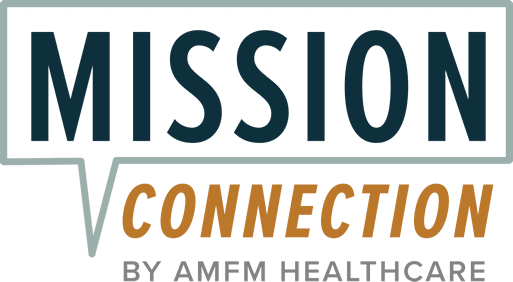Employee Assistance Program Mental Health Referrals: Reducing Burnout in the Workplace

But how much support can an EAP really give you? And what happens if what you’re going through needs more than a few short sessions? These are common questions, which can be answered by a mental health professional with experience in the area. This guide can also help, as it covers the employee assistance program mental health referrals process by looking at:
What an EAP actually is- Whether employees really make use of EAPs
- How EAP counselors can connect you with further support
- What support after an EAP referral can look like
- How Mission Connection can step in when more help is needed

What Is an EAP?
An Employee Assistance Program, or EAP, is an employee benefit that many companies across the world utilize. It’s something you may have heard HR mentioning, but it also might be one of those services that you don’t really notice until you need to use it yourself. At its core, it’s a way for employees to get support when life either outside or inside the office starts to become too much to handle alone.
The value of an EAP comes from having a place to turn that isn’t your boss’s office and doesn’t leave you worrying about whether you can afford it. Possibly most importantly, it’s a place where you can discuss your troubles without the fear of it jeopardizing your job.
One of the biggest advantages of EAPs is that they’re already there, ready to use. You don’t have to spend weeks hunting down a therapist or wondering if your insurance will cover the cost. If your employer offers an EAP, the service has already been paid for, and you can usually connect with someone quickly.
With private therapy sessions sometimes costing more than people can afford without assistance, this is a fantastic benefit for any worker.
The Current State of EAPs in the US
Over 72 million workers had access to an EAP through their benefits- More than 2.6 million organizations across the public and private sectors fund EAPs
- 84% of large employers (500+ employees) offered an EAP
- 66% of mid-sized employers (100-499 employees) offered an EAP
- 32% of small employers (1-99 employees) offered an EAP
These large percentages show just how well-received EAPs are by those in management positions – their benefits are clearly recognized. But what about the employees themselves? Do they make use of these benefits?
Do Employees Actually Use EAPs?
Studies suggest that only around five out of every hundred employees who have access to an EAP actually use it for personal counseling.3
During the pandemic, usage rates doubled as stress levels soared, but even with that bump, the numbers remain low. For a resource designed to be widely available and easy to access, the truth is that far too many people leave it untouched.
So why does this happen? The reasons are varied and often frustrating, and include:4
Employees worrying about confidentiality and whether their employer will really be kept out of the loop of information shared in therapy- People feeling uncomfortable with the idea of seeking mental health support at all, as they still carry the weight of the stigma that surrounds it
- A lack of confidence in the quality of the programs they’re referred to
- Not recognizing that the program exists or is available to them in the first place
What’s striking is that many of these concerns come from people who’ve never actually gone through the EAP process. Perception, rather than experience, is what holds them back. This is why it’s important to look more closely at how EAP sessions really work, and what employees can expect if they take that first step.
How EAP Mental Health Sessions Usually Work
If you’ve been slightly apprehensive about attending an EAP session, it can help to understand exactly how the process goes. Once the unknown becomes known, the fear usually subsides.
Below, we take you on a journey through each step of how EAP mental health sessions work.
1. Booking an Appointment
The first real action is arranging a time to speak. Most companies will give you a phone number or online portal where you can make contact directly. If you’re unsure how to get started, your HR rep can usually point you in the right direction without needing to know the details of why you’re reaching out. All you’re doing at this stage is booking a slot – nothing more – and sometimes just setting this date in the calendar feels like the biggest step.
2. Assessment
The next step is called an “assessment,” but the word doesn’t really do it justice. It’s not a clipboard interview or a cold tick-box exercise. It feels more like sitting down with someone who actually wants to hear your story.
For example, you will talk about what’s been weighing on you, such as feelings of burnout or other mental health issues, that you’d like to address. By the end of this stage, a mental health professional will usually have a sense of where you’re at and what kind of support could make a difference right now.
3. Short-Term Counseling
If it seems like talking further about what you’re going through could help, you might be offered a short run of sessions. These sessions are usually stretched across a few weeks and allow you to stop and focus on what’s happening in your life.
Sometimes the biggest relief is being able to admit things out loud without having to soften them for family, colleagues, or friends. This honesty can make the weight you’re carrying feel a little lighter, even if the problems themselves aren’t solved overnight.
4. Next Steps (If Needed)
Every so often, what comes up in weekly sessions might point to something deeper. In these cases, a counselor won’t just leave you hanging. They’ll steer you toward the kind of specialist support that can carry you further, whether this is ongoing therapy or another service.
The important part is that you’re not left feeling “dropped” at the end of your program. Instead, you walk away knowing where to go next, and that the handover was made with your needs in mind rather than a generic “Good luck out there.”
Why Would EAP Counselors Refer You to Higher-Level Support?
If you’ve been referred beyond the EAP, it doesn’t mean you’re “too difficult to help” or that you’ve somehow failed. What it actually shows is that your counselor is paying close attention and wants you to get a level of care that truly fits your needs.
The following information takes a closer look at some of the most common scenarios for why EAP counselors might refer you to further support.
When the Issue Goes Beyond Short-Term Support
If you’ve taken part in a few sessions with your counselor and they suggest a higher level of support,5 this isn’t always something to worry about. In fact, it’s a reassuring sign that they’re tuned in to what you really need.
EAP sessions can be an excellent way to take the weight off your shoulders, but they’re not designed to solve every problem. Some people leave these sessions feeling lighter, while others discover that a little more time and a more specialized type of help would make a difference.
If you fall into the second group, you can feel safe knowing you’re being guided toward the right place rather than being left to figure it out on your own.
When the Number of Sessions Runs Out
EAPs typically offer a set number of meetings. If your challenges can’t be resolved in this window, the counselor won’t simply close the door. Instead, they’ll point you toward services that can continue the work, making sure you don’t lose momentum just because the clock ran out.
In Cases Where Both Health and Behavior Overlap
Sometimes the concerns you bring to an EAP are connected to other behaviors or patterns in your life that need more intensive attention. In these situations, the counselor may suggest another service that could offer broader or more sustained support.
When Workplace Performance Hints At Something Deeper
There may be moments when a referral comes after conversations involving HR or management.6 For example, if issues regarding attendance or conduct have raised questions, the EAP can be the first step in addressing what’s going on. If the counselor feels more support is needed, they’ll guide you toward it so that the issue is met with care rather than criticism.
What Does Higher-Level Support Actually Mean?
We’ve spoken a lot about “higher levels of support,” but it’s easy to see how this phrase could feel vague, or maybe even a little intimidating. So let’s clear it up. When an EAP counselor suggests you may need more than the sessions they can offer, they’re usually talking about two possible paths: outpatient care or inpatient care.
The information below explains these care options in more detail.
Outpatient Care
Outpatient care is the most common next step after EAP involvement. In these programs, you typically attend scheduled sessions and then return home afterward. Outpatient care works well for people who can keep up with work or family life but want more consistent support than an EAP can provide.
The focus in outpatient treatment is on managing conditions that need longer-term attention, such as:
Each of these conditions provides challenges that, unfortunately, don’t vanish after a handful of conversations. Yet, with regular therapy, you can begin to find stability. Outpatient treatment gives you the rhythm of ongoing care, while also letting you practice what you’re learning in real life between sessions.
Inpatient Care
Inpatient care is the type of support that usually comes into play during a crisis, when symptoms feel unmanageable at home or there are serious concerns about safety.
For example, you may come into the EAP session showing signs of:
- Severe anxiety or panic attacks that feel overwhelming and unmanageable
- Suicidal thoughts or behaviors that create immediate safety concerns
- Intense depression that makes daily life difficult to cope with
- Sudden psychosis, such as hallucinations or delusions
In these situations, an inpatient setting is often the best option. It provides a hospital-style environment where you have access to professionals who can offer the right medication and treatments to help stabilize what you’re going through.
Being referred for inpatient care can sound daunting, but it’s ultimately about safety and reassurance. If your counselor recommends it, it’s because they believe you might benefit from an environment where help is immediate and continuous until the worst of the storm passes.
Mission Connection: Your Next Step in Care
If your EAP counselor has recommended a higher level of support, you may find yourself wondering where to go next. This referral can sometimes feel daunting, but in reality, it’s a step toward more focused help, and it may lead you to a place like Mission Connection.
At Mission Connection, we specialize in outpatient care designed for people across the US managing complex mental health challenges. Our programs range from flexible outpatient sessions to more structured options like intensive outpatient programs (IOP) and partial hospitalization programs (PHP). This means we can match the level of support to what you need right now, rather than asking you to fit into a one-size-fits-all approach.
We regularly support people facing issues with:
- Depression
- Anxiety
- bipolar disorder
- trauma-related struggles
- Schizophrenia
- ADHD
- Psychosis
- Self-harm
- Anger issues
Whatever you’re dealing with, you’ll work alongside licensed mental health professionals who guide you step by step. Therapy often includes evidence-based approaches like CBT and DBT, combined with individual, group, or family sessions, depending on what fits best for your circumstances.
Life doesn’t always make it simple to attend therapy in person, which is why Mission Connection also offers telehealth options. Through secure video, phone, or even online messaging, you can stay connected to your therapist and keep building progress without leaving home.
If you’ve been referred for specialized care and aren’t sure what the next step looks like, Mission Connection can be your bridge to continued support. Reach out today.

References
- Naber, A. (2021). One third of your life is spent at work. Gettysburg College. https://www.gettysburg.edu/news/stories?id=79db7b34-630c-4f49-ad32-4ab9ea48e72b
- Attridge, M. (2023). The current state of employee assistance programs in the United States: A research-based commentary. International Journal of Scientific and Research Publications, 13(8), 74–91. https://doi.org/10.29322/IJSRP.13.08.2023.p14010
- Attridge, M. (2022). Profile of small employers in the United States and the importance of employee assistance programs during the COVID-19 pandemic. American Journal of Health Promotion, 36(7), 1229–1236. https://doi.org/10.1177/08901171221112488d
- Psychology Today. (n.d.). Why employees aren’t accessing employee assistance programs. Everyday Resilience. https://www.psychologytoday.com/us/blog/everyday-resilience/202405/why-employees-arent-accessing-employee-assistance-programs
- TransAmerica Institute. (2024). Employee assistance programs for mental health. https://www.transamericainstitute.org/resources/health-care-guides/employee-benefits/employee-assistance-programs-for-mental-health
- Attridge, M., & Pawlowski, D. (2017). Formal management referrals compared to self-referrals to counseling from an external employee assistance program (EAP) in the United States 2017–2023: Profiles of user characteristics and work and clinical outcomes before and after treatment. International Journal of Scientific and Research Publications. https://www.ijsrp.org/research-paper-0523.php?rp=P13712860






